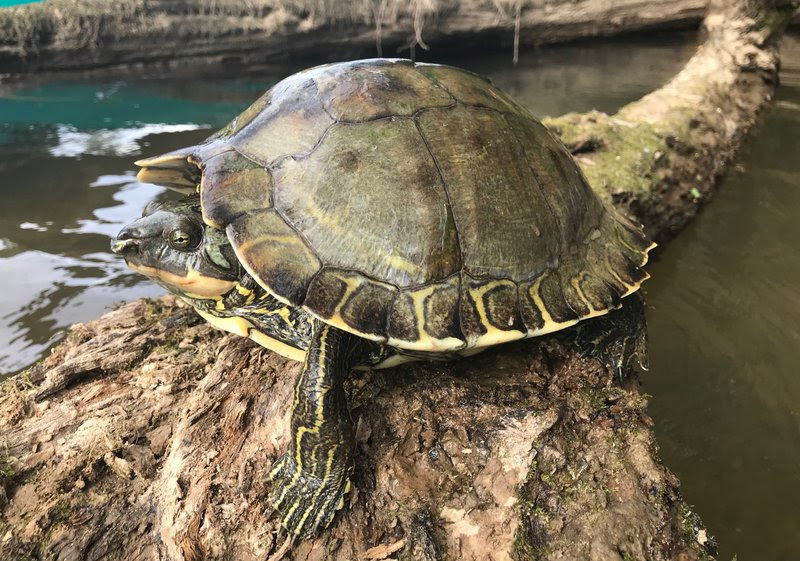NEW ORLEANS—As the result of a lawsuit by the Center for Biological Diversity and Healthy Gulf, the U.S. Fish and Wildlife Service has agreed to decide on Endangered Species Act protection for Pascagoula and Pearl River map turtles by Oct. 29, 2021.
Approved Thursday by U.S. District Court Judge Emmet G. Sullivan, the agreement resolves a suit filed in January that challenged the Service’s failure to make a timely initial finding on a 2010 petition to protect the Pascagoula map turtle under the Endangered Species Act.
“North American turtles survived the asteroid that killed the dinosaurs, but these two species need help to live through the havoc we’re wreaking on rivers,” said Jason Totoiu, a senior attorney for the Center for Biological Diversity. “These turtles are in steep decline and need the safeguards afforded by the Endangered Species Act before it’s too late.”
Map turtles serve as indicators of river health, and poor water quality can devastate their populations. In addition to habitat loss and degradation from dams, floodplain clearing and river channelization, other threats include the harvest of turtles for sale in Asian food and medicinal markets and collection for the pet trade.
“The Pearl River Map turtle needs all the help it can get, so it’s good that the listing determination will proceed,” said Andrew Whitehurst, Healthy Gulf’s water program director. “Ten miles of its breeding and feeding habitat are now in the project area for the ‘One Lake’ project to dredge and dam the Pearl River’s main channel in Jackson, Mississippi. The Corps of Engineers is evaluating the project’s final Environmental Impact Statement now, so the Fish and Wildlife Service’s work is timely and relevant for these turtles.”
Map turtles are often called “sawbacks” for the ridges along their backs that can form small spikes. Pearl River map turtles can live up to 30 years in the wild.
The Pascagoula map turtle has a relatively small range in the Pascagoula river system in Mississippi, while the Pearl River map turtle is only found in creeks and rivers within the Pearl River drainage in Mississippi and Louisiana. The Pearl River map turtle was once considered to be the same species as Pascagoula map turtle, but scientists more recently determined they’re two separate species.

Pascagoula map turtle.. Photo courtesy of Grover Brown. Image is available for media use.

Pearl River map turtle. Photo courtesy of Cris Hagen, University of Georgia, Savannah River Ecology Laboratory. Image is available for media use.
The Center for Biological Diversity is a national, nonprofit conservation organization with more than 1.7 million members and online activists dedicated to the protection of endangered species and wild places.
Healthy Gulf is a regional nonprofit whose purpose is to collaborate with and serve communities who love the Gulf of Mexico by providing the research, communications, and coalition-building tools needed to reverse the long pattern of over exploitation of the Gulf’s natural resources.
